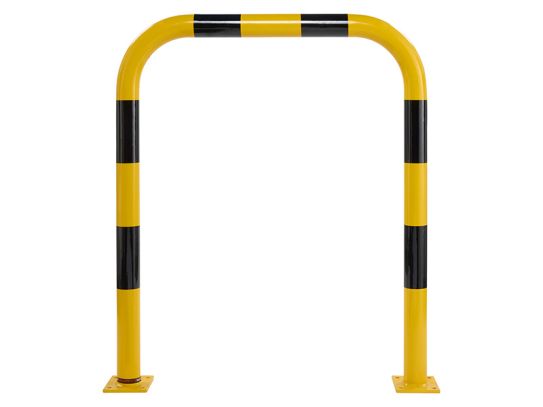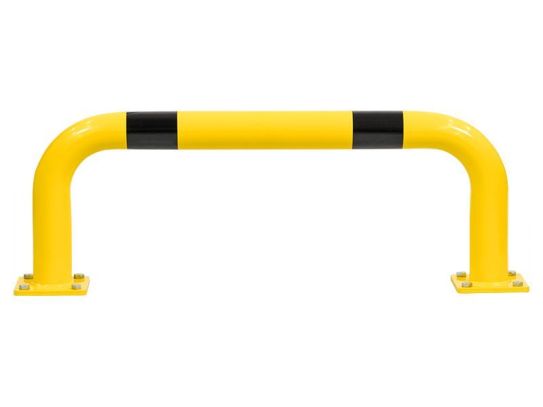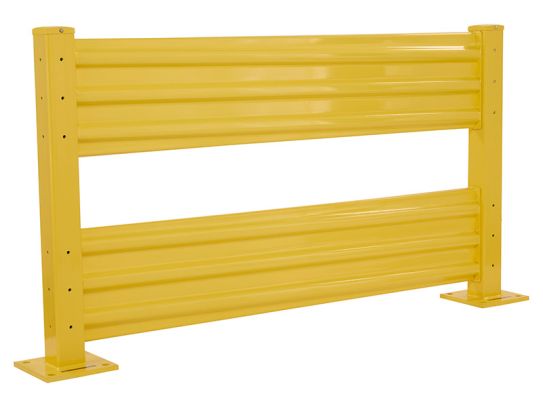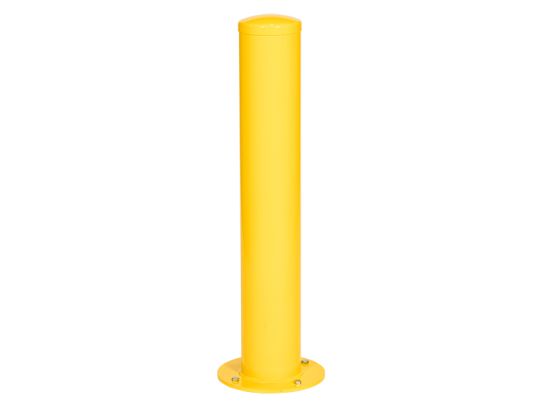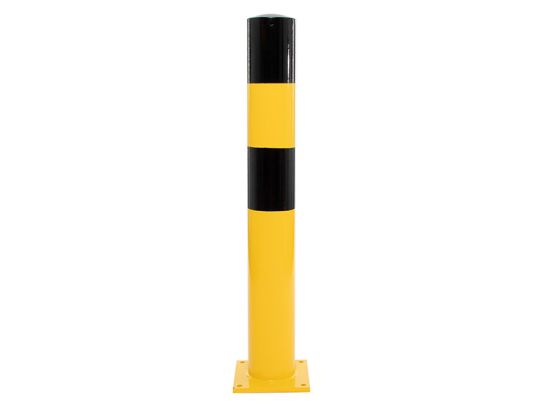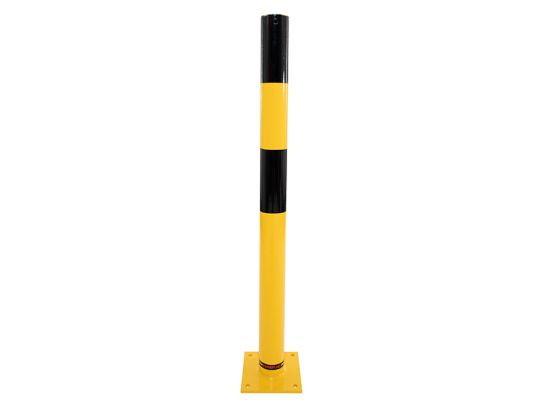Warehouse Impact Barriers
Keep your warehouse safe and protected with our heavy duty warehouse impact barriers. These barriers are designed to withstand the toughest impacts, making them a reliable choice for protecting your equipment and racking. Choose from hoop barriers, armco barriers, and heavy duty racking barriers to find the perfect fit for your facility.
Safety First With Our Warehouse Impact Barriers
Are you tired of worrying about the safety of your warehouse equipment and racking? Look no further! Our warehouse impact barriers are here to save the day.
Our heavy duty barriers are perfect for any warehouse environment and can withstand even the toughest impacts. Whether you need hoop barriers, armco barriers, or heavy duty racking barriers, we've got you covered.
These barriers are not only strong and durable, but they can also be used both indoors and outdoors, making them a versatile choice for any warehouse. Protect your equipment and give yourself peace of mind with our reliable warehouse impact barriers. Order yours today!
What Are Warehouse Impact Barriers?
Warehouse impact barriers are barriers designed to protect equipment, racking, and other structures in a warehouse from impact. They are typically made of heavy duty materials, such as steel or concrete, and are designed to withstand the impact of collisions with forklifts or other types of material handling equipment. There are several different types of warehouse impact barriers, including hoop barriers, armco barriers, and heavy duty racking barriers, which can be used in a variety of warehouse settings to help prevent damage and ensure the safety of employees.
What Are Some Common Uses for Warehouse Impact Barriers?
Warehouse impact barriers are commonly used in warehouses, distribution centres, and other industrial facilities to protect equipment, racking, and other structures from impact. They can be used to protect a wide range of structures, including shelving units, conveyor belts, and machinery. In addition to protecting equipment and structures, warehouse impact barriers can also be used to create a physical barrier between pedestrians and material handling equipment, helping to reduce the risk of accidents and injuries in the workplace. Other common uses for warehouse impact barriers include marking the edges of loading docks, protecting perimeter walls, and creating separation between different areas or zones within a warehouse.
What Are the Different Types of Warehouse Impact Barriers?
There are several different types of warehouse impact barriers, including:
- Hoop barriers: These barriers consist of a series of horizontal steel bars mounted on upright posts. They are typically used to protect racking, shelving units, and other structures from impact.
- Armco barriers: These barriers are made of corrugated steel and are designed to withstand the impact of collisions. They are often used to protect the edges of loading docks, perimeter walls, and other structures.
- Heavy duty racking barriers: These barriers are designed to protect racking systems from impact and are typically made of heavy duty steel.
- Plastic barriers: These barriers are made of lightweight plastic and are often used to mark the edges of loading docks, protect perimeter walls, and create separation between different areas or zones within a warehouse.
What Are the Key Features to Consider When Choosing Warehouse Impact Barriers?
When choosing warehouse impact barriers, there are several key features to consider, including:
- Material: The material used to construct the barrier will affect its strength, durability, and suitability for different environments. Some common materials used for warehouse impact barriers include steel, concrete, and plastic.
- Size and shape: The size and shape of the barrier will determine its ability to protect different types of equipment and structures. Consider the size and shape of the structures you need to protect when selecting a barrier.
- Impact resistance: The impact resistance of a warehouse impact barrier is an important factor to consider, as it will determine the barrier's ability to withstand collisions and protect equipment from damage.
- Versatility: Consider whether the barrier can be used in a variety of warehouse environments, both indoors and outdoors, to ensure that it is a versatile choice for your facility.
- Ease of installation: Look for barriers that are easy to install and can be quickly and easily placed in the desired location.
- Maintenance requirements: Consider the maintenance requirements of the barrier, as this will affect the long-term cost of ownership.
- Price: Determine your budget and look for barriers that offer good value for money.
How Do I Choose the Right Type of Barrier for My Warehouse?
There are several factors to consider when choosing the right type of warehouse impact barrier for your facility:
- Determine the types of equipment and structures that need to be protected. This will help you determine the size and shape of the barrier you need.
- Consider the material of the barrier. Different materials have different properties, such as strength, durability, and suitability for different environments.
- Think about the impact resistance of the barrier. You'll want to choose a barrier that can withstand the impact of collisions with forklifts or other material handling equipment.
- Consider the versatility of the barrier. Look for barriers that can be used in a variety of warehouse environments, both indoors and outdoors.
- Think about the maintenance requirements of the barrier. Some materials may require more maintenance than others.
- Determine your budget and look for barriers that offer good value for money.
- Consider the overall design and appearance of the barrier. You may want to choose a barrier that fits in with the overall aesthetic of your warehouse.
By considering these factors, you can choose the right type of warehouse impact barrier for your facility.
How Do I Maintain Warehouse Impact Barriers?
Here are some tips for maintaining warehouse impact barriers:
- Regularly inspect the barriers for signs of damage or wear. Look for cracks, dents, or other damage that could compromise the integrity of the barrier.
- Repair any damage as soon as it is discovered. This will help to prevent further damage and ensure that the barrier continues to function effectively.
- Clean the barriers on a regular basis to remove dirt, dust, and other debris that can accumulate over time. Use a mild detergent and a soft cloth or brush to gently scrub the surface of the barrier.
- Protect the barriers from the elements by storing them in a covered area or using a weather-resistant cover when they are not in use.
- Follow the manufacturer's instructions for any additional maintenance requirements, such as lubrication or tightening of bolts.
By following these maintenance tips, you can help to ensure that your warehouse impact barriers remain in good condition and continue to provide effective protection for your equipment and structures.
Can Warehouse Impact Barriers Be Used Both Indoors and Outdoors?
Some warehouse impact barriers are designed for use both indoors and outdoors, while others are intended for use in one type of environment or the other. Factors that can affect the suitability of a warehouse impact barrier for indoor or outdoor use include the material of the barrier, the level of impact resistance required, and the overall design of the barrier.
For example, steel or concrete barriers may be more suitable for outdoor use due to their durability and strength, while plastic barriers may be more suitable for indoor use due to their lightweight design. It is important to consider the specific needs of your warehouse and the types of equipment and structures that need to be protected when selecting a warehouse impact barrier.
What Safety Considerations Should Be Taken Into Account When Using Warehouse Impact Barriers?
There are several safety considerations to keep in mind when using warehouse impact barriers:
- Follow all manufacturer's instructions and guidelines for installing and using the barriers.
- Make sure that the barriers are properly secured and positioned to provide effective protection.
- Regularly inspect the barriers for signs of damage or wear, and repair any damage as soon as it is discovered.
- Keep the area around the barriers clear of debris and obstructions to ensure that they are clearly visible and easy to access.
- Make sure that employees are aware of the location of the barriers and are trained on how to use them safely.
By following these safety guidelines, you can help to ensure the safe and effective use of warehouse impact barriers in your facility.
Are There Any UK or European Industry Regulations That Apply to Warehouse Impact Barriers?
Yes, there are industry standards and regulations in the UK and Europe that apply to warehouse impact barriers. In the UK, the Health and Safety Executive (HSE) has published guidance on the use of barriers in warehouses and other industrial environments. This guidance recommends the use of barriers to protect equipment, racking, and other structures from impact, and provides information on the types of barriers that are suitable for different types of warehouses.
In Europe, the relevant standard is EN 15635:2008, which specifies the requirements and test methods for the performance of barriers used in warehouses and other industrial environments. This standard covers the design, construction, testing, and marking of warehouse impact barriers, and applies to barriers that are used to protect equipment, racking, and other structures from impact.
It is important for warehouses and other industrial facilities to comply with these standards and regulations to ensure the safety of employees and the protection of equipment and structures.
